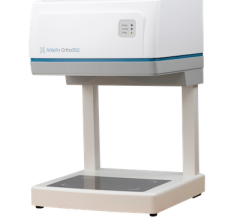June 3, 2010 - More than 70,000 people in the U.S. were diagnosed with cancer of the bladder in 2009, with an estimated 14,000 people dying from the disease, according to the National Cancer Institute. The disease is difficult to detect, and the most common, initial sign is red-colored urine, which calls for urine cytology and cystoscopy.
The difficulties in diagnosing bladder cancer and a high rate of recurrence led to the development of Cysview cystoscopy. Cysview (hexaminolevulinate HCl), an optical imaging agent, is injected into the bladder through a catheter. Cysview accumulates differentially in malignant cells. Cysview is used with the Karl Storz D-Light C Photodynamic Diagnostic (PDD) system to perform cystoscopy with the blue light setting (Mode 2) as an adjunct to the white light setting (Mode 1). When illuminated with blue light from the cystoscope, the cancerous lesions emit red fluorescence, highlighting the malignant areas.
The U.S. Food and Drug Administration (FDA) recently cleared Cysview for the detection of non-muscle-invasive papillary cancer of the bladder in patients with known or suspected bladder cancer. The optical imaging agent is indicated for use in the cystoscopic detection of non-muscle-invasive papillary cancer of the bladder among patients suspected or known to have lesion(s) on the basis of a prior cystoscopy.
“Phase III clinical data supplied with the New Drug Application demonstrated a significantly improved rate of detection of non-muscle-invasive papillary cancer using Cysview cystoscopy compared to standard white light cystoscopy alone in patients with non-muscle-invasive papillary bladder cancer,” said Eric Cantor, M.D., head of medical affairs for GE Healthcare's Medical Diagnostics Business in the Americas. “The use of Cysview and blue light cystoscopy enables physicians to detect bladder tumors more accurately than with standard white light technology. The introduction of Cysview is a reflection of our commitment to providing innovative advances in diagnostic oncology.”
“Data from the pivotal 305 trial demonstrates that Cysview cystoscopy significantly improves detection of papillary bladder cancer, leading to a more complete resection of bladder cancer and significantly improving disease-free survival when compared to white light cystoscopy,” said Professor H. Barton Grossman, MD, Professor, Department of Urology at the M.D. Anderson Cancer Center in Houston, Texas, and lead investigator of the trial. “We found this to be true both for patients with initial and recurrent disease.”
The standard bladder cancer diagnostic procedure combines urinary cytology and white light cystoscopy. Cytology is non-invasive, using a urine sample to detect cancer cells. This provides specificity and sensitivity in detecting high-grade lesions, but provides no information on the location and extent of the disease. If the test is positive for cancer cells, the next step is direct visual inspection of the urothelium and mucosa with white light cystoscopy to localize the tumors. In addition, during this procedure the physician can perform a transurethral resection of suspicious areas of the bladder. Finally, the samples can be tested to determine if they are malignant.
For more information: www.gehealthcare.com


 December 10, 2025
December 10, 2025 









